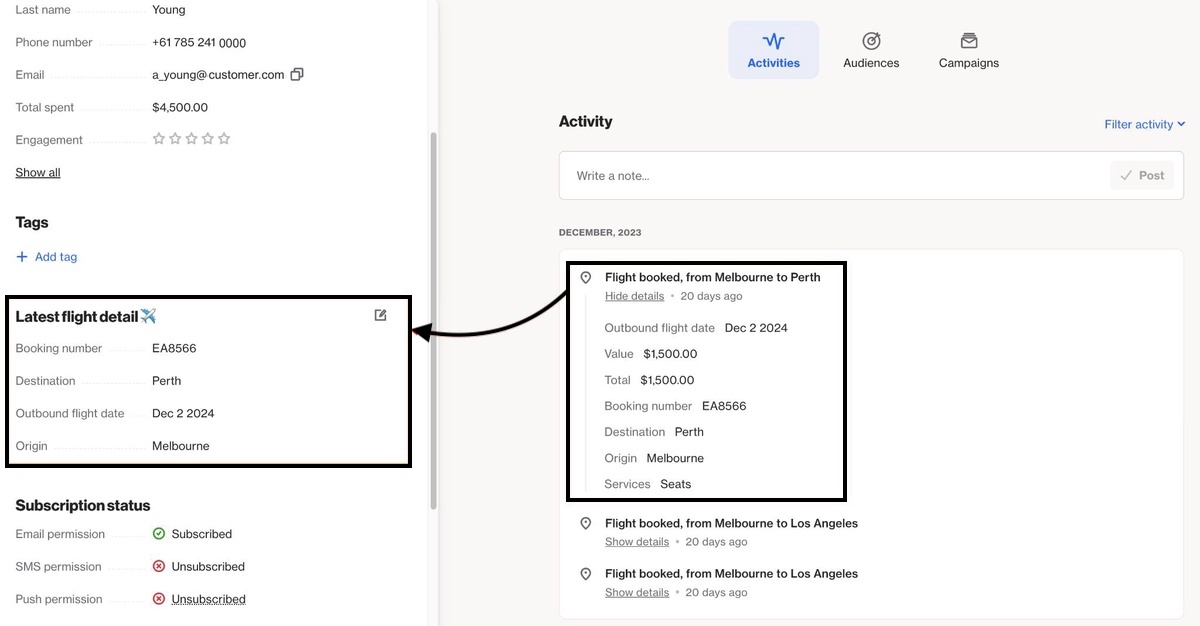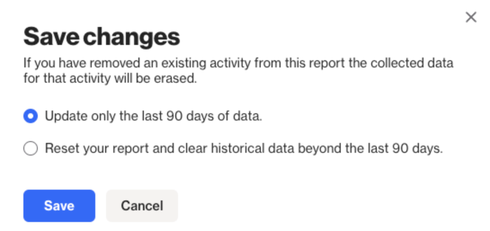Understanding activity data in Ortto
This page is designed to give you an overview of how activity data is stored in Ortto, where you can find it, and how you can store activity data for longer periods.
Read below to learn more about:
Default behavior for activity data
All system, custom and data source activities and their attributes are retained in Ortto for 90 days. The 90-day limit means that Ortto does not retain data that, in some cases, passes its period of usefulness. This could impair the performance of filters, journeys, audiences and other areas of Ortto over time.
Below, you will find how this impacts activity data across each area of Ortto.
Activity feeds
Activity feeds are designed to give you a live feed of activity and can be found under the views (profiles or detail pages) for people, accounts, data sources, audiences, campaigns (including journey shapes), and capture widgets.
NOTE: Activities older than 90 days will not be visible in activity feeds.
Any attributes from activities that are important to store beyond 90 days can be mapped to fields to give you an overview of the most recent data for that person or account.

NOTE: Some activity feeds for journey shapes, including condition, filter, delay and split shapes, are limited to the last 1,000 recipients.
CDP and filtering
Activity attributes will not be available past 90 days to filter people or accounts.
EX: Results for the following filter conditions (using where clauses to include activity attributes) will be unavailable past 90 days:
- Flight booked has occurred where destination is Los Angeles
- Opened email last occurred 180 days ago where email name is <xxxx>
- Order completed first occurred 365 days ago where Product SKU is 123abc.
While activity attributes expire after 90 days, the first and last occurrences of an activity are stored as a timestamp on a contact's record, meaning you will continue to be able to filter data using this information beyond 90 days.
So, using the above examples, you could instead create filter conditions like:
- Flight booked has occurred – To surface any people who have ever had a flight booked activity.
- Opened email last occurred 180 days ago – To identify a slipping subscriber.
- Order completed first occurred 365 days ago – To identify the anniversary of a customer.
Reports
NOTE: Activities older than 90 days cannot be used to create new reports.
Once an activity expires, it cannot be used in a new report. Activities already contributing to reports will continue to aggregate beyond 90 days as long as they are not deleted or reset after editing.

Extend activity data storage
In some cases, storing an activity and its attribute data may be necessary for longer than 90 days. In such cases, Ortto provides a mechanism for customers to opt-in to store their select activity data for longer.
This is known as data retention.
When data retention is enabled, activity data is stored for the defined period to be referenced against.
Learn more about extending activity data storage.
Configuring data retention
By default, the data for all data source activities and their attributes are only retained in Ortto for 90 days. This ultimately affects your ability to:
- filter data based on these activities and attributes, and
- create new reports based on these activities.
Learn more about configuring data retention.
